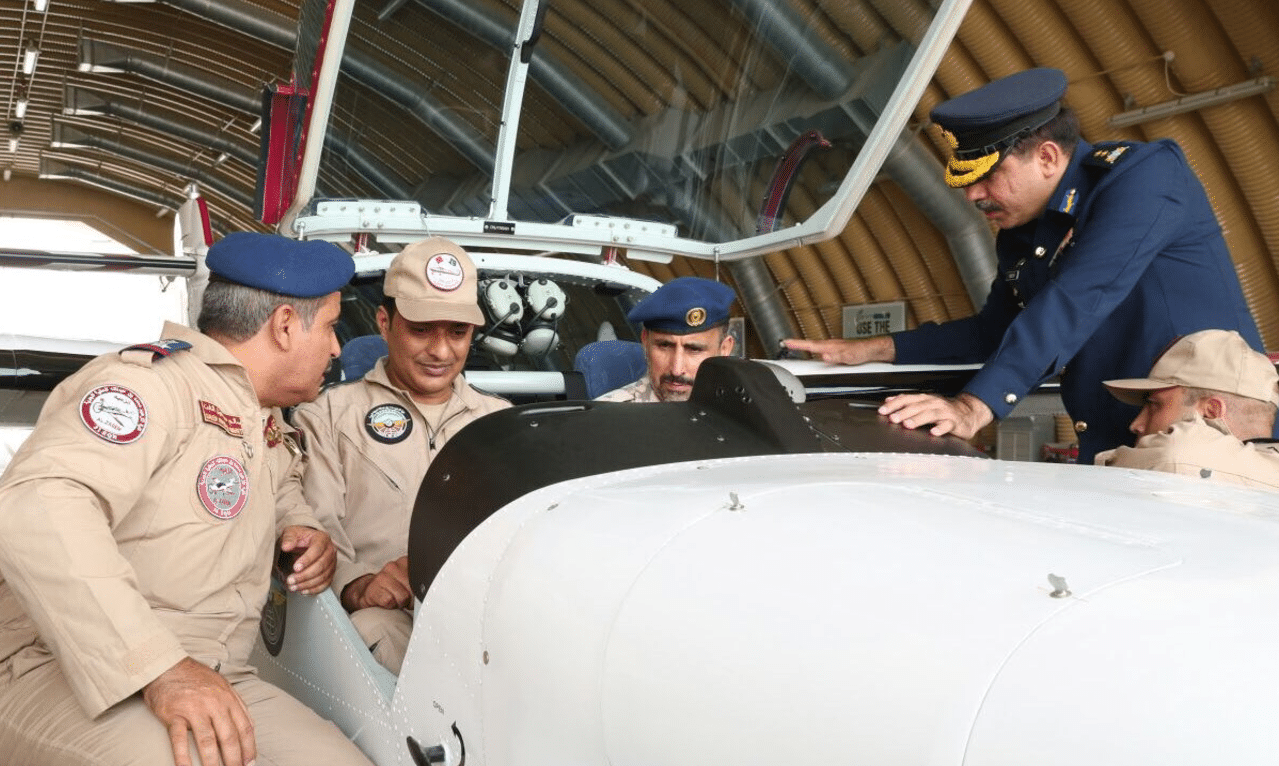2889Views 5Comments

PAC delivers first batch of Super Mushshak trainers to Qatar
Qatar’s Ministry of Defence (MoD) announced that Pakistan Aeronautical Complex (PAC) delivered its first batch of Super Mushshak trainers to the Qatari Emiri Air Force (QEAF) on July 19.
Qatar ordered eight Super Mushshak trainers from PAC in June 2016. The QEAF will operate the trainers at its al-Zaeem Air Academy. It appears that the Super Mushshak will serve as a primer and/or screener trainer, from which pilot trainees will move onto the Pilatus PC-21.
In the same week, PAC also delivered the first five of 10 Super Mushshak trainers to the Nigerian Air Force.
After completing its deliveries to Qatar and Nigeria, PAC will proceed to fulfill a 52 Super Mushshak aircraft order for the Turkish Air Force. This is the single largest Super Mushshak order to-date.
The QEAF’s fighter aircraft fleet will swell in the coming years through the induction of 24 Dassault Rafales and 36 Boeing F-15QA. Moreover, the Rafale and F-15QA are larger twin-engine fighters, each possessing significantly greater payload capacity and range than the Mirage 2000-5.
Besides fulfilling the QEAF’s air defence roles, both additions with imbue the QEAF with long-range strike capabilities. For example, the Rafale will accompany an assortment of stand-off range munitions, among them the MBDA SCALP (Système de Croisière Autonome à Longue Portée) air-launched cruise missiles.
The QEAF’s close air support (CAS) element, which is currently built around the Dassault Alpha Jet, will be expanded with 24 Boeing AH-64E Apache Guardian attack helicopters.
Interestingly, the Pakistan Air Force (PAF) had demonstrated the JF-17 Thunder multi-role fighter to Qatar during a goodwill visit to the Gulf state in February 2016. Aviation journalist Alan Warnes reported that the JF-17 had been in contention as a candidate for succeeding the Alpha Jet in the attack role.
The matter has not progressed since then, but the PAF could position the forthcoming JF-17 twin-seater as a dual attack and training solution. However, even if the QEAF was to consider a lead-in fighter-trainer (LIFT) platform, its U.S. and French fighter fleet may predispose it to a Western LIFT solution.



5 Comments
by Amir Timur
Good achievement for the PAC. But the Super Mushshak still has a long way to go. It’s got even more potential if the armed variant is developed soon. The market for trainers cum light attack aircrafts in the middle east and Africa for their COIN and ISR capabilities is enormous. Also, it can supply domestic demand from the PAF or even paramilitaries like the FC, Rangers etc. for providing close air support and situational awareness. Countries like Brazil and South Africa have made steady progress, through programs like the Super Tucano and AHRLAC. Problem is, PAC caters almost exclusively to the PAF’s requirements. This is problematic, since the PAF is entrusted with guarding Pakistan’s skies, primarily from India. To match it’s requirements, programs focused on will be costlier and long drawn out. While they’re at it, the PAC should also realise the potential it has in third world markets whose needs are less fancy. The Super Tucano sale to Nigeria with financial backing from the US is evident of this. It could’ve been Pakistan instead of Brazil, had this potential been realised earlier.
by umar rana
what is the price of super mashak?
How many numbers area sold till today?
by Saqib
Slm… Steve and bilaI hope u r fine and doing good…why PAF not integrating EW jamming systems in JF 17? any potential hurdle?
by Steve
This is Bilal’s website and his perogative to answer queries. I think this topic has been covered in previous JF-17 articles.
by Bilal Khan
EW is currently done via podded system. I don’t know if they intend to integrate a EW jamming system into the plane in Block-III.